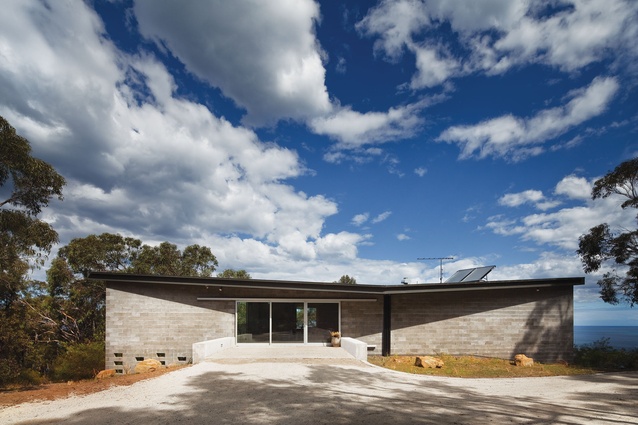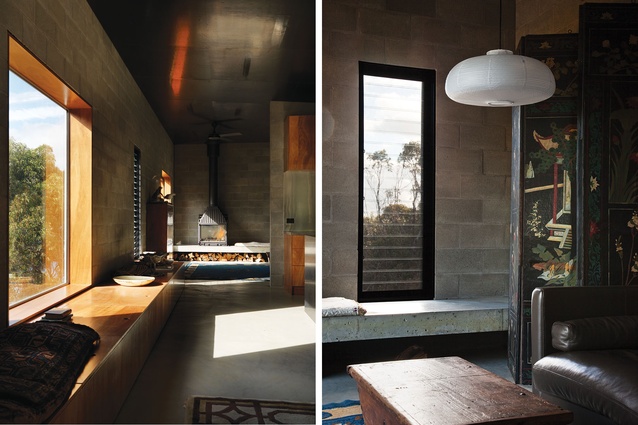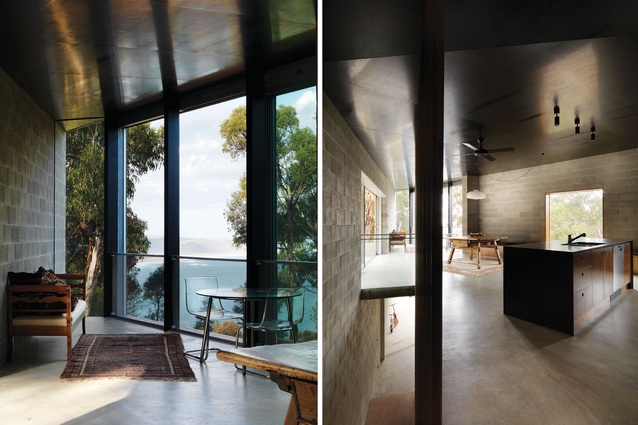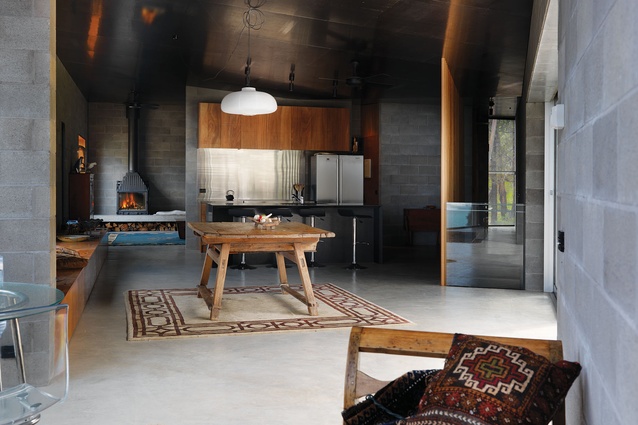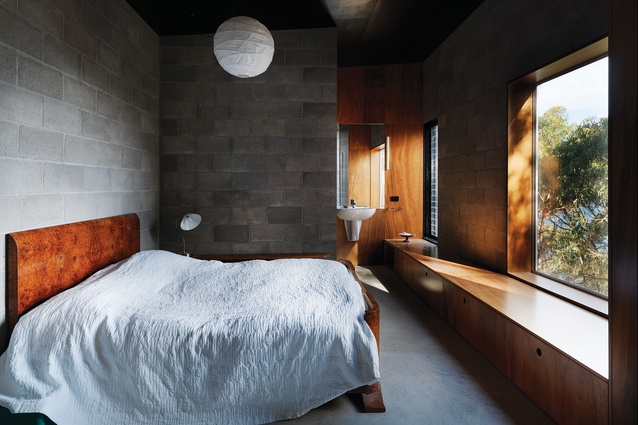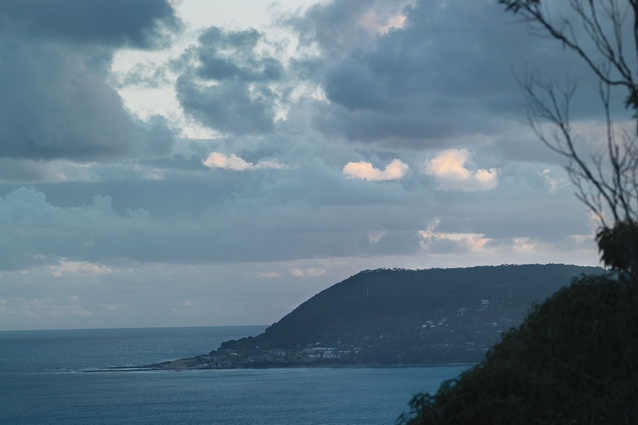Block party
Susan and Colin Johnston had always wanted to build a home designed by an architect. So, after owning a little timber beach house at the top of Big Hill in south-eastern Victoria for 30 years, they decided to tear it down and start from scratch.
The isolated property is located near the Great Ocean Road – one of Australia’s most spectacularly picturesque coastal landscapes. But what is remarkable about the sloped site is its close proximity to the beach, even though it’s surrounded by dense bush and mature eucalypts. It seems much further inland than what it actually is, until the views out towards Bass Strait and the small seaside towns of Lorne and Aireys Inlet become apparent.
Any architect hired by the Johnstons had to be able to respond to a rugged environment. The couple took expert advice – from their son-in-law, Philip Goad, Chair of Architecture at the University of Melbourne – and Kerstin Thompson was hired, thanks to her reputation for designing homes in remote rural settings and weather-beaten coastal enclaves.
“The clients were after something quite sculptural and solid,” explains the Melbourne-based principal and founder of Kerstin Thompson Architects. “It’s a bushfire-prone area, so they wanted to feel grounded in order to experience those important qualities of protectiveness, thickness and mass.”
Thompson’s triangular, three-bedroomed plan gave the 240m², two-levelled weekender a sense of dynamism and monumentality, while concrete block delivered a reassuringly robust material outcome. From the upper-level entry, the beach house appears to recede into the surrounding bush. Once inside, the space is configured to take advantage of the plan’s strict geometry. Thompson located the kitchen, lounge, dining and living areas, along with the master bedroom and ensuite, on the top level, so that the owners can shut off downstairs when it’s just the two of them. Their three grown children and respective families, including eight grandchildren, also use the house, and it is large enough to accommodate most of them at any one time.
The interior is impressive for the austere concrete walls that Thompson boldly left unadorned. It also embraces shadow as much as it does natural light, so the space is neither blindingly bright nor uncomfortably dark during daylight hours. “This nuanced quality of light tends to amplify the colours of the landscape, whether in the sea, sky or trees,” says Thompson, who recently received a residential architecture prize at the Australian Institute of Architects 2014 National Awards. “When you have a bright, all-white interior I don’t think it has quite the same effect.”
The grey-and-black palette is enriched by the use of Blackbutt for the joinery and the reveals that line the picture frame windows looking out to the sea. These reveals essentially become part of the window seats, which double as storage units in the dining area and master bedroom and add a warm, bespoke element that contrasts with the coolness of the concrete block.
“There’s something nice about being able to sit in the wall,” Thompson says. “You’re in between being inside and outside, while still having the protection of the wall, which is very comforting.”
By far the interior’s most resounding design expression is the form-ply ceiling that is painted black throughout. It is a dramatic flourish that has the opposite effect to what one might normally expect, says Thompson: “A black ceiling tends to fade into the sky at night, making the interior more expansive rather than oppressive; it also gives the sense of being under a canopy or parasol. We tend to undervalue the idea of shade in Australia and the relief it actually offers, so this ceiling in its darkness plays a part in providing that quality of shade and protection.”
It also heightens the cosiness of the lounge area that is positioned in the right angle of the triangle plan. It’s one of Susan Johnston’s favourite spots in the house. “It has a fireplace and, on a cold, wet afternoon, we can sit there and watch TV; it feels so solid and contained,” she says. “The original house was single storeyed and on stilts and quite insubstantial in comparison. It was very noisy and every time the wind blew it felt like it was going to fall down!”
There’s a nice interplay between the structure’s right angle, which looks out towards the bush, and the opposing acute angle, which looks out to the sea. This corner of the house was potentially fraught with difficulties because it is so tight, but Thompson uses it to blur the boundary between inside and outside, transforming it into an interior balcony when the large glass windows are wide open. It offers both protection from and exposure to the landscape, while taking advantage of uninterrupted sea views. The plan’s uncommon geometry considers the site’s topography in regards to footprint, reinforcing Thompson’s clever environmental response.
The architect has created a retreat that is easy for a big family to visit, while managing to stay within the Johnstons’ strict budget by utilising cost-effective concrete block as a building material. Susan and Colin – who permanently reside in Melbourne’s eastern suburbs – get to the beach house once a month for a couple of days but it’s typically in use by extended family every weekend.
The couple’s existing furniture and soft furnishings – a rustic timber dining table, steel-framed kitchen stools and Persian rugs and cushions – perfectly suit the space.
“I would hope that it elicits a sense of delight and comfort,” Thompson says of her creation. “But the most important thing is that it’s liveable.”

